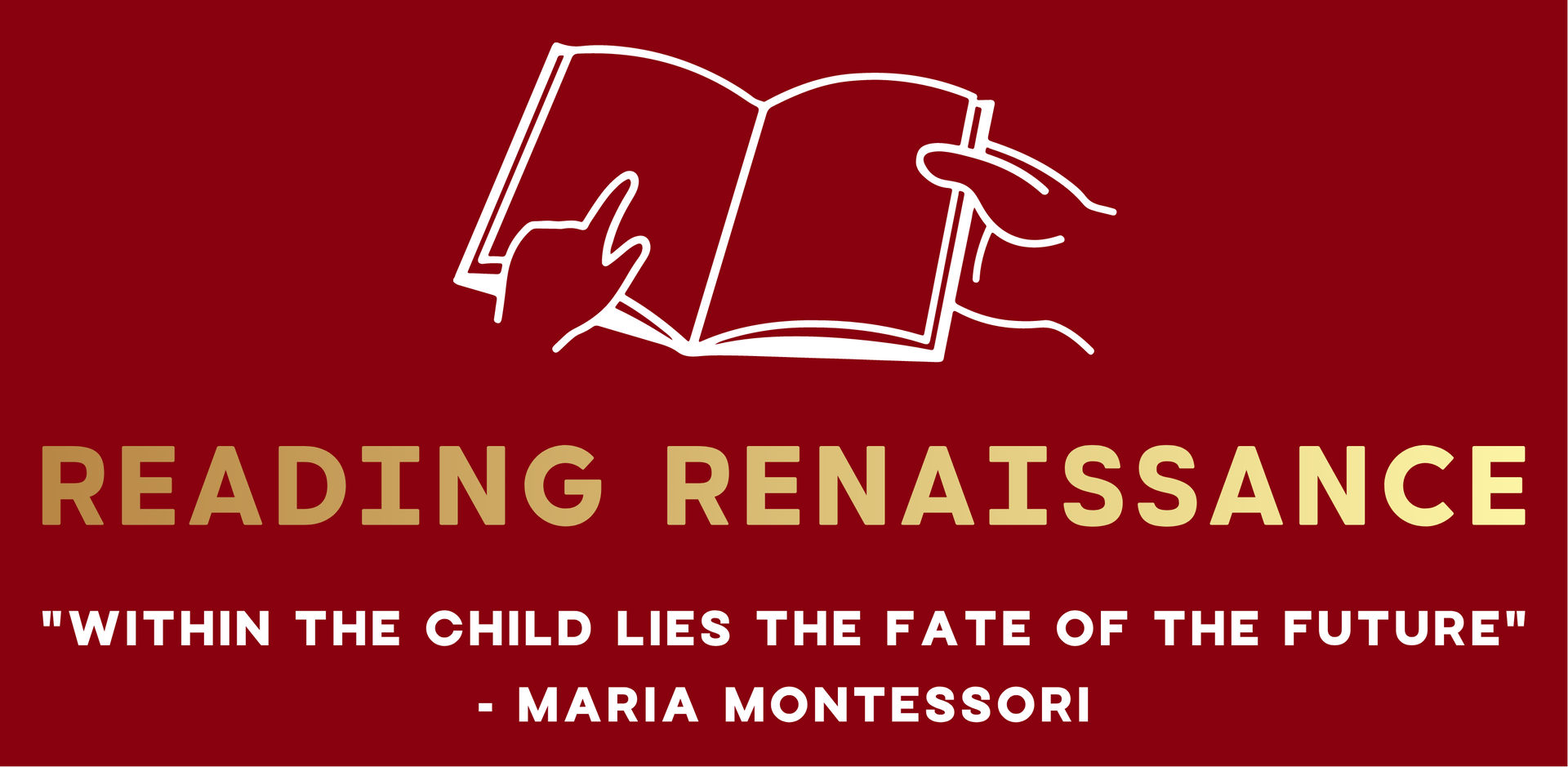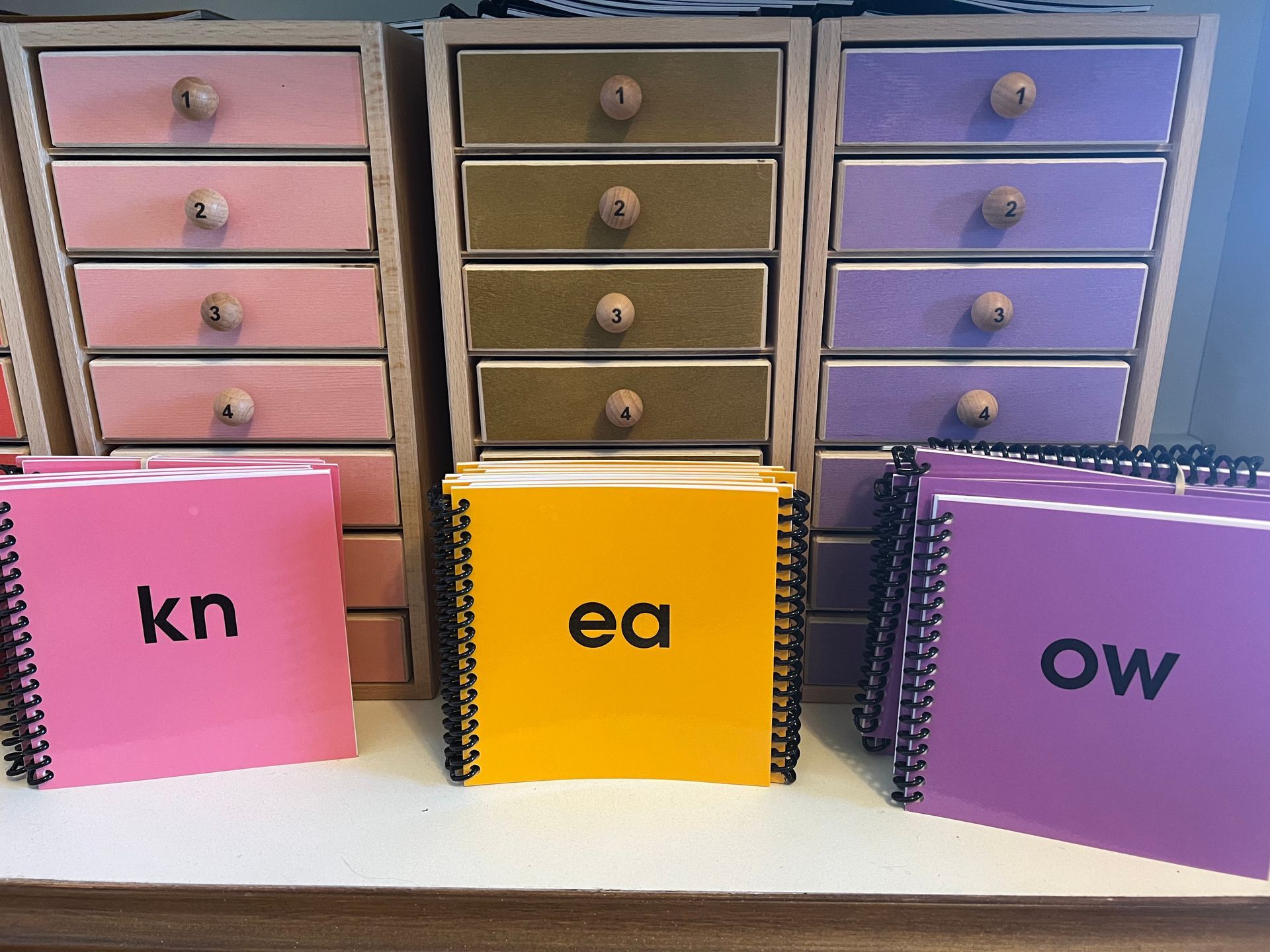
Curriculum

Phonemic Awareness and Phonics
Phonemic awareness and phonics are critical for developing strong reading, spelling and writing skills. They work together to support a child’s ability to decode and encode words, leading to improved reading fluency and comprehension. Effective instruction in these areas is essential for early literacy development and lays the groundwork for future academic success. While they are related, they focus on different aspects of language skills.
-
Phonemic Awareness
Phonemic awareness refers to the ability to identify and manipulate individual sounds, known as phonemes, in spoken words. It involves recognizing and understanding that words are made up of smaller sound units and being able to manipulate those sounds. For example, phonemic awareness skills include being able to identify the initial sound in a word ("cat" starts with the sound /k/), blend individual sounds together to form a word (/b/ + /a/ + /t/ = "bat"), or segment a word into its individual sounds ("dog" can be broken down into /d/ + /o/ + /g/).
-
Phonics
Phonics on the other hand, is the relationship between letters and the sounds they represent. It involves understanding that letters and letter combinations (graphemes) correspond to specific phonemes. Phonics instruction teaches children the connection between letters and sounds, enabling them to decode and encode words. For instance, they learn that the letter "c" can represent the sound /k/ in words like "cat" and the letter combination "sh" can represent the sound /ʃ/ in words like "ship." By applying their knowledge of phonics, children can read words by sounding them out and spell words by segmenting them into their constituent sounds.
While phonemic awareness focuses solely on the auditory aspect of language, phonics connects the sounds of language to the symbols (letters) used in written language. Phonemic awareness provides the foundation for phonics instruction because it helps children develop an understanding of the individual sounds in words. Once children have strong phonemic awareness skills, they can apply that knowledge to phonics by associating letters with sounds and using that information to read and spell words.
Vocabulary and Morphology
Vocabulary and Morphology are interconnected aspects of language development. Vocabulary involves the acquisition and use of words, while morphology focuses on the study of word structure and how words are formed. A strong vocabulary and morphological awareness contribute to effective communication, reading comprehension, and word analysis skills. Vocabulary and morphology are two important components of language development which contribute to a person's ability to comprehend and use words effectively.
-
Vocabulary
Vocabulary refers to the collection of words that an individual understands and uses in their language. It encompasses the knowledge of word meanings, their definitions, and the ability to recognize and interpret words in various contexts. A robust vocabulary is essential for effective communication, comprehension, and expression. It allows individuals to understand and convey ideas, express emotions, and engage in various forms of written and oral communication. Having a diverse and extensive vocabulary enhances reading comprehension and helps individuals grasp the meaning and navigate through ideas.
-
Morphology
Morphology, on the other hand, is the study of word structure and the rules that govern how words are formed and combined to create meaning. It focuses on the smallest meaningful units of language called morphemes. Morphemes can be individual words or parts of words, such as roots, prefixes, and suffixes. For example, in the word "unhappiness," "un-" and "-ness" are morphemes that modify the meaning of the root word "happy."
Understanding morphology helps individuals make sense of the meaning and structure of words. By recognizing and analyzing morphemes, individuals can infer the meaning of unfamiliar words and understand how words are related to one another. Morphological awareness also aids in word recognition and decoding skills. For example, recognizing the root word "play" in words like "played," "playing," and "playful" allows individuals to understand the common theme and meaning shared by these words. By understanding word roots, prefixes, and suffixes, individuals can decipher the meaning of complex words and expand their vocabulary. For instance, knowing that "bio-" means life and "-logy" means the study of, one can infer the meaning of the word "biology" as the study of life.


Fluency and Comprehension
Fluency and Comprehension are interdependent components of the reading process. Fluency enables readers to effortlessly decode words and maintain a steady reading pace, while comprehension involves actively constructing meaning from the text. Together, fluency and comprehension create a foundation for skilled and engaged reading, allowing readers to derive deep understanding and enjoyment from written material.
-
Fluency
Fluency is the ability to read text accurately, quickly, and with appropriate expression. It involves the smooth and effortless flow of reading, where words are recognized automatically, and the reader can maintain a steady pace without unnecessary pauses or stumbling. Fluent reading also incorporates intonation, phrasing, and expression that align with the meaning and mood of the text.
Fluency is important because it serves as a bridge between word recognition and comprehension. When readers are fluent, they can decode words effortlessly, allowing their attention to shift from individual word identification to understanding the meaning of the text as a whole. Fluent readers can recognize words instantaneously, freeing up mental resources to focus on higher-order reading skills, such as making connections, inferring meaning, and analyzing the author's purpose.
-
Comprehension
Comprehension refers to the understanding and interpretation of written text. It involves actively engaging with the text, making connections with prior knowledge, and constructing meaning from the information presented. Effective comprehension entails extracting key ideas, making inferences, summarizing information, analyzing the text structure, and evaluating the author's message or argument.
Comprehension goes beyond simply decoding words. It requires readers to actively interact with the text by asking questions, visualizing, making predictions, and monitoring their understanding. Skilled readers engage in metacognitive processes, such as recognizing when they are confused or when their understanding is incomplete, and employing strategies to clarify or deepen their comprehension.

Mrs. O has made a such a great impact on our kids mastery and enjoyment of reading. Beyond explicit instruction, she is teaching them to advocate for themselves to further impact their success at school. She is a joy to work with and has been a great resource for us in learning dyslexia , ways to support our kids at home, and helping to identify their individual learning needs.
- Kristi, mother of three students
